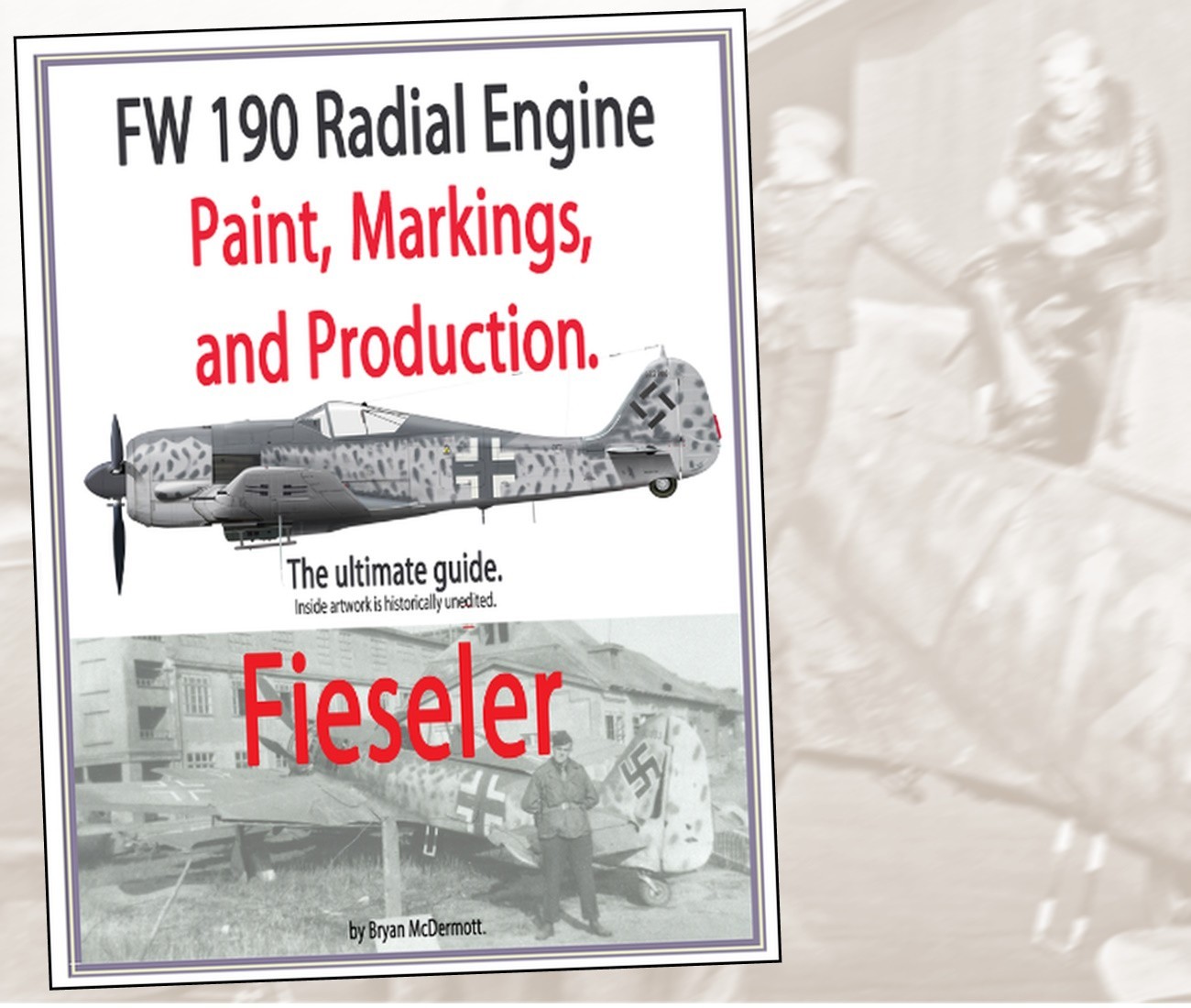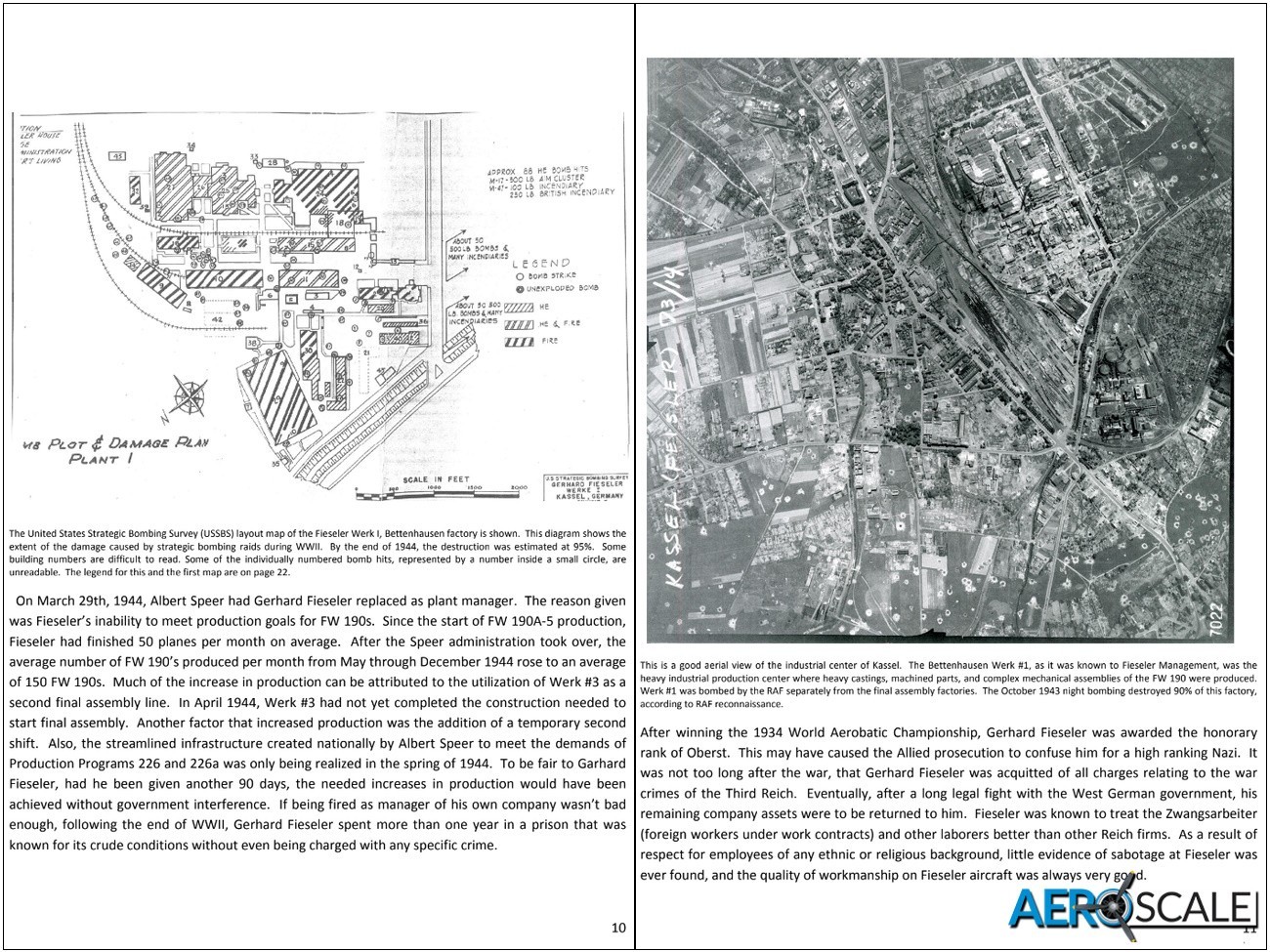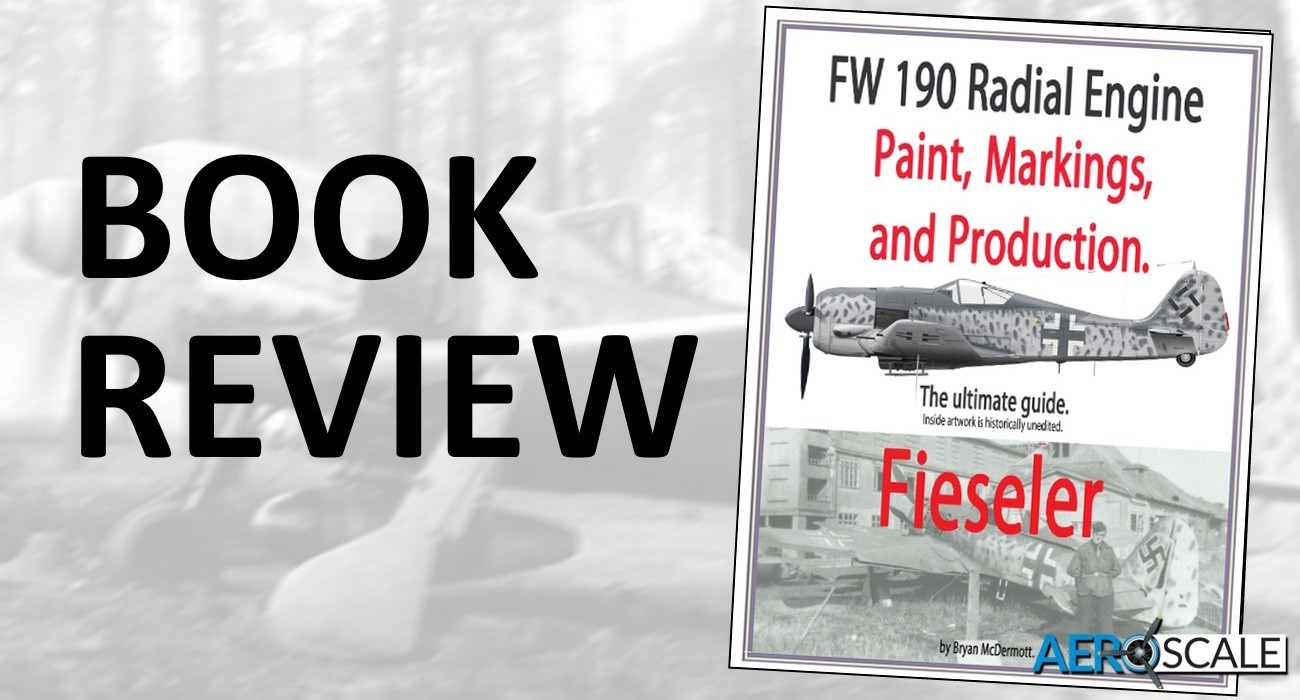
Bryan McDermott has published the third instalment of his fascinating study ’FW190 Radial Engine Paint, Markings, and Production’, this time looking at the contribution from Fiesler. This third book follows up on his earlier books of the production of the radial engine Fw 190 by Norddeutschen Dornier Werk [NDW] and Arado. Bryan has spent 35 years sifting through documents and photographic collections from government and private sources in the US and Germany.

The research begins with a fascinating biography of Gerhard Fieseler: fighter ace, aerobatic pilot, aircraft designer, and founder of the Fiesler works. The company is probably best known for the FI 156 Storch and later for the FI 103 [V1] flying bomb. Fiesler was to produce the Fw 190 from the A-3 through to the A-8/R-2. Next is a look at Fiesler Flugzeugbau sites for the Fw 190 around Kassel at Bettenhausen, Waldau, and Rothwesten. The author has included excellent high-quality photos and maps of the sites. The not insignificant political and military pressure on production is discussed. Not to mention the significant problem of Allied bombing in destroying production facilities.
The Fiesler production of the Fw 190 covered in this book is split into variants:
- FW 190A-3 Production Block: 137001-137025.
- FW 190A-4 Production Block: 147021-147200.
- FW 190A-5 production Block: 1573201-157375.
- FW 190A-6 production Block: 530101-530198.
- FW 190A-6 production Blocks: 530301-530431, 530711-530770, 530920-530940.
- FW 190A-6, production Block: 531074-531950.
- FW 190A-7 production Block: 642001-642970, 643601-643950.
- FW 190A-8/R2 Production Block: 680101-680200.
- FW 190A-8/R2 Production Blocks: 680411-680435, 680496-680590.
- FW 190A-8/R2 Production Block: 680715-680850.
- FW 190A-8/R2 Production Blocks: 681021-681050, 681251-681425.
- FW 190A-8/R2 Production Block: 681456-681530.
- FW 190A-8/R2 Production Block: 681841-681900.
- FW 190A-8/R2 Production Blocks: 681960-681999, 682001-682070.
- FW 190A-8/R2 Production Block: 682170-682320.
- FW 190A-8/R2 Production Block: 682640-682845.
- FW 190A-8/R2 Production Block: 682901-682999.
- FW 190A-8/R2 Production Block: 683310-683340.
The author provides a detailed written description of the paints [RLM reference numbers included] and the application of the paint on the airframes. The author has identified and explains various camouflage patterns and techniques and application of the paint making it possible to identify Fiesler built Fw 190. There are numerous high-quality photos as well as twenty-two color profiles illustrating the authors observations.
Fiesler was not quite so dependent as other Fw 190 manufacturers on sub-contractors. Fiesler had the capacity to build sub-assemblies such as the fuselage, weapon cowl, wings, fuselage, and tail assemblies. All the components are all looked at, with notes on any evolution in appearance. The pre-painting of the sub-assemblies adds even more interest to the completed aircraft creating at times a mismatched look. The size and positioning of markings as well as stencils are discussed. As the Author succinctly states: “One intended goal of this book is to help reestablish some of this glamour through the beauty of the Fieseler FW190 paint scheme unique to all Focke Wulf 190 manufacturers”. If that aim doesn’t heighten the interest of any Luftwaffe historian of modeler, I don’t know what will. The author identifies a ‘Fiesler house style’ in regards to the application of the camouflage and markings. Providing several cues to help the reader recognise Fiesler built ‘Butcher birds’. There are numerous images that the author has acquired over the last thirty-five years, some of which that have not been seen before. The author has picked out individual aircraft as subjects for further study. The studies include a short history, component identification, camouflage and marking. Included are colour profiles and photographs of the subject. There are several additional illustrations depicting the various upper wing, vertical and horizontal tail, and fuselage camouflage patterns. These provide an excellent visual cue, though there are no indications on the illustrations of the paints used. These are noted in the body of the text.
The author describes the battle to destroy the Fiesler production facilities around Kassel by air and land forces. There is plenty of detail and photographic evidence of the air strikes by the USAAF by day and the RAF by night. The author tells the story of the battle for Kassel on the ground. The strategic value of Kassel was recognised by the German high command, who designated the city a ‘Festung’ (fortress.) The author includes an account of the fighting which was particularly intense. One of the many interesting narratives is about Fieslers Industry Protection Squadron. A company financed squadron charged with protecting the Flugzeugbau sites.
.
A constant throughout the book is the quantity and quality of the primary research from the manufacturer, Luftwaffe, Allied Air Forces, etc. The original written documentation from the manufacturer is included along with a translation. Equally impressive are the many high quality black and white photographs. The author has created several colour profiles featuring some of the aircraft on show in the photos. You can see for yourself the numerous variations in markings. The book includes many maps, aerial photographs, and reports from Fiesler as well as from the occupying Allied forces.
As mentioned, the author has covered the Arado and NDW production of the Fw 190 in the first two volumes. Future publications by Bryan McDermott will feature the last of the Flugzeugbau: AGO. You can purchase the books either digitally or printed from Amazon.
Conclusion
This is such a well-researched, detailed, and fascinating look at the production of the Fw190A built by Fiesler. The author has done a phenomenal amount of work drawing in primary research including photographs and documents to provide the reader with so much information useful to aviation historians and modelers. The distinctive paint finish of the Fiesler Flugzeugbau will be of significant interest to the modeller. The author has gone to the trouble of translating the documents into English. All in all, this is a superb reference and one I can highly recommend for any aviation historian or modeller.
FW 190 Radial engine paint, markings and production. Fiesler
- Publisher: Independent Publisher (5 July 2024)
- Editing and Formatting by Bryan McDermott
- Illustrated by Bryan McDermott
- Cover design by Bryan McDermott
- ASIN: B0D8FSV84J
- Language : English
- Paperback: 186 pages
- ISBN-13: 979-8987377949
Available in print or digitally for Kindle
The review is from a PDF copy of the book supplied by Bryan McDermott. My thanks to Bryan for the copy.
Please remember, when contacting retailers or manufacturers, to mention that you saw their products highlighted here on Aeroscale.

